#keystone species
Text
The Kenya Wildlife Service celebrated the successful transfer of 21 eastern black rhinos to establish a new viable breeding population for the species that was on the brink of extinction decades ago.
In an 18-day exercise executed by highly trained capture and veterinary experts, the Loisaba Conservancy received the 21 rhinos from three different locations, becoming the 17th sanctuary in Kenya where the mammoth animals can roam and intermingle.
“It’s incredibly exciting to be part of the resettlement of rhinos to a landscape where they’ve been absent for 50 years,” said Tom Silvester, CEO of Loisaba Conservancy.
Kenya had 20,000 black rhinos in the 1970s before poachers decimated them for their horns. By the time the Kenya Wildlife Service (KWS) was established in 1989, rhino numbers had declined to below 400.
Since then, Kenya’s eastern black rhinos have made a remarkable comeback and today there are an estimated 1,004 individuals.
Kenya is a stronghold of the eastern sub species of black rhino, hosting approximately 80 percent of the entire world’s surviving population.
“Surpassing the milestone of 1,000 rhinos within four decades is a significant accomplishment,” said Munira Bashir, Director of The Nature Conservancy in Kenya.
The reintroduction this month of these 21 animals this month is a great milestone in Kenya’s rhino recovery action plan, and was made possible by support from The Nature Conservancy, San Diego Zoo Wildlife Alliance, other partners—and the three reserves from where the 21 rhinos originated, Nairobi National Park, Ol Pejeta Conservancy and Lewa Conservancy.
“In the recent past, one of the main causes of mortality of rhinos has been territorial fights due to limited space in sanctuaries which has also led to suppressed growth rates due,” explained Dr. Erustus Kanga, the Director General of Kenya Wildlife Service. “I am elated to be associated with this momentous effort to secure more space for this cornerstone species.”
Meanwhile, southern white rhinos continue to thrive in Kenya, having increased from 50 individuals that were imported from South Africa in the eighties and nineties to reach the current population of 971 individuals.
Kenya is also playing a critical role in efforts to save the northern white rhino from extinction, as it is host to the only remaining two females of the species left in the world. The international BioRescue project has developed thirty embryos awaiting implantation into surrogate females within the closely-related subspecies of southern white rhino.
“The return of black rhinos to Loisaba, 50 years after the last known individual here was killed by poachers in the 1970s, is a demonstration of how impactful partnerships between governments and conservation NGOs can be for restoring, managing, and protecting our natural world,” said Dr. Max Graham, CEO and Founder of Space for Giants, one of the project partners.
“And, of course, the return of black rhinos here gives all of us one of the most precious commodities of all: hope.”
-via Good News Network, February 25, 2024
#rhino#rhinoceros#conservation#hope posting#endangered species#wildlife#kenya#good news#hope#zoology#zoo animals#keystone species
341 notes
·
View notes
Text
Bison are often associated with North America, but the wisent (Bison bonasus) is native to Europe. It was driven to extinction in the wild in the early 20th century (it had been extirpated from western Europe for several centuries), but reintroduction efforts began a few decades later.
As with American bison (Bison bison), the wisent is an important keystone species, and its reintroduction stands to benefit the ecosystems it is returning to. As browsers, wisent help keep plant growth in check, and their manure is valuable both for the plant community as well as detritivores and decomposers like various insects, fungi, and microbes. Native large carnivores are generally as scarce as the bison, but in places where wolves and other predators still exist, the bison could be important sources of food.
The hard truth about restoration ecology is that we will never be able to get ecosystems back to how they were before humans so heavily altered them. We can't even necessarily return them to when our impact was much lighter, given all the changes we have made. But if we can at least create pockets of biodiversity with safe travel corridors between them, that will go a long way in at least keeping native wildlife from disappearing entirely. The reintroduction of the wisent in Europe, and the bison in North America, represent important steps in undoing at least a little of the damage done.
#wisent#bison#bovidae#European bison#endangered species#extinction#ecology#restoration ecology#habitat restoration#keystone species#mammals#nature#wildlife#animals#environment#conservation#science#scicomm#rewilding
94 notes
·
View notes
Text
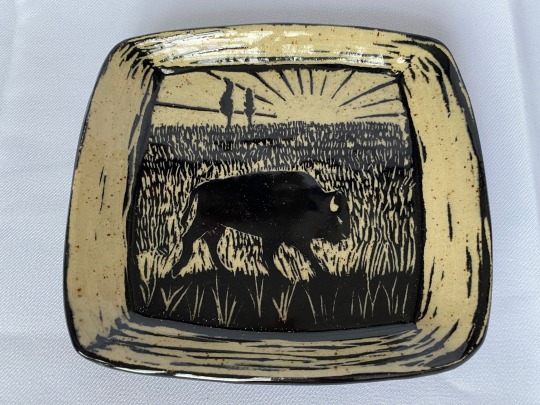

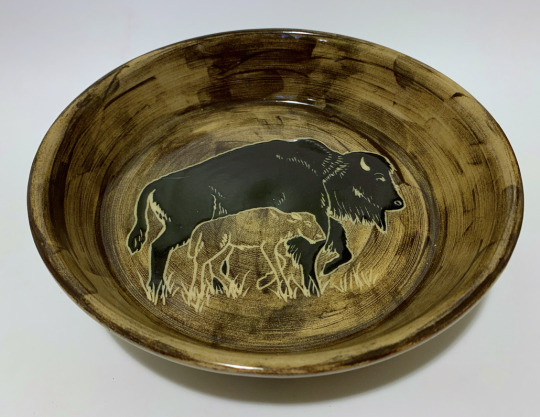
some bison pieces of mine.
I've been inspired by the native bison being brought back to the Canadian prairies by Wanuskewin. It's an amazing thing they've done and I feel so happy every time they post in the spring that there are new calves being born here, where they belong, after having been completely wiped out by colonization.
the first piece was done on speckled clay. I don't play with speckled clay much but the effect is really nice on this particular tray.
the second is really bright, that red and orange are lovely.
and on the third piece the glaze was supposed to turn out a cinnamon colour, but it interacted oddly with the clear glaze and ended up that muddy colour. It's still quite neat. the calf in front of its mother was supposed to blend into the background. it would have looked cooler in the cinnamon, since baby bison are a reddish colour

#bison#canadian prairies#plains bison#pottery#ceramics#sgraffito#speckled clay#wanuskewin#saskatchewan#Canadian wildlife#keystone species#endangered biome#grassland#North American animals#calves#bison calf#claypigeon
104 notes
·
View notes
Text
youtube
Across our projects we've worked with plenty of keystone species, so we've decided to start a series highlighting some of them! For today, let's look at the European Flat Oyster, the subject of our reintroduction project to the Cromarty Firth in Scotland.
🌾 To support our work you can become a member here: https://mossy.earth
MOSSY EARTH MEMBERSHIP
===============================
The rewilding membership that restores nature across a wide range of ecosystems.
🌲 Support a diversity of ecosystems
🐺 Rewild habitats to bring back biodiversity
🦫 Fund neglected species & ecosystems
Learn more and become a member here: https://mossy.earth
💪 OUR PARTNERS IN THIS VIDEO
===============================
🌊 Moray Ocean Community
IG: @morayoceancommunity
X: @morayocean
CCN:https://www.communitiesforseas.scot/c...
⏱️TIMESTAMPS⏱️
0:00 Intro
0:34 What is a Keystone Species?
1:50 The European Flat Oyster
7:33 Next time...
🔎 ABOUT THIS PROJECT
===============================
European Flat Oysters (Ostrea edulis) are considered functionally extinct in many parts of Europe. Native oyster beds were once widespread in the UK and known as ‘the poor man’s food’, but have declined by 95% in the United Kingdom since the mid-19th century. This habitat-forming species would have once been present throughout our coastlines alongside other habitats such as seagrass beds, but now they are either absent or in relatively small, fragmented populations. There are no known remaining wild native oyster populations within the Cromarty Firth, but they were present in the area in the recent past. This community-led marine enhancement project, in partnership with Moray Ocean Community, aims to reintroduce native oysters to the Cromarty firth and generate open access data on the coastal and marine habitats found in the wider area.
Find out more about this project here: https://www.mossy.earth/projects/nati...
#Mossy Earth#solarpunk#tidalpunk#rewilding#oyster#keystone species#oysters#scotland#Cromarty Firth#uk#Britain#europe#marine life#ocean#sea#native wildlife#European Flat Oyster#oyster beds#Youtube
11 notes
·
View notes
Text
This article is from last year, but this year is when Congress is deciding on the bill one of my state's representatives put forward to allow people to hunt and kill grizzlies, which are still threatened and are a keystone species in many ecosystems here.
Here's a link to donate to the Sierra Club, which is an environmental organization that does a lot of work to fight against these kinds of potentially catastrophic policies.
Here is another article from a different source about the proposed bill (this article is also from last year, but again, the bill is going to be decided soon).
#grizzlies#grizzly bear#threatened species#keystone species#idaho#us#u.s.#us politics#environment#ecosystem#sierra club#wildlife
5 notes
·
View notes
Text
Oregon Zoo
93 notes
·
View notes
Text
Sea Otters Returned to a Degraded Coastline Ate Enough Crabs to Restore Balance and Cut Erosion by 90%
Kelp creates underwater forests, which often serve as nurseries. Here in the Pacific Northwest, after sea otter populations were wiped out sea urchins overpopulated. Urchins eat kelp, and huge swaths of former kelp forests were, in essence, clearcut. By re-establishing otter populations, urchin populations have been maintained and kelp forests are renewing. 🦦
P. S. This isn't the first time this type of research has been documented. Probably the most popular (in North America at least) has been the re-introduction of wolves to Yellowstone National Park. There have been other examples around the world.
P. S. II Every ecosystem has what are known as keystone species. These are species without which the ecosystem would collapse. NB: Keystone species are not always top predators. Returning sharks to reefs goes a long way to restoring balance, but within the ocean as a whole, phyto plankton (tiny plants) form the foundation for all life there. For a quick overview of keystone species, check out the movie "The Serengeti Rules".
2 notes
·
View notes
Text
🐘 * presses my foot in the watery mud so that smaller mutuals can drink from the newly created puddle *
12 notes
·
View notes
Text
This is epic, I'm so excited to see how this will change things. The wolves reintroduced to Yellowstone had a massive effect. Reintroducing these keystone species is going to change up so much! And I am happy that the Blackfeet get their species back. really, there is great news. 7/7/23
3 notes
·
View notes
Photo

Along the Watchtower
© 2022, James Blatter
#white tailed prairie dogs#cute animals#rodents#nature photography#animal photography#wildlife photography#wild animals#keystone species
8 notes
·
View notes
Text
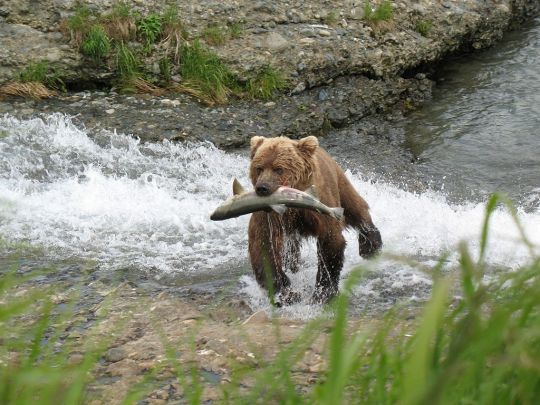
Salmon are integral to coastal forests. Buffalo are key to grasslands. Keystone species play roles in ecosystems that are still working to understand.
2 notes
·
View notes
Text
So those that say there's NO POSSIBLE WAY the indigenous people of turtle Island were here always or that we ventured out elsewhere are completely ridiculous. They Still think the land bridge was a thing even thou that theory was debunked.. who really knows we could have went the other way over that bridge and that's why our DNA is found elsewhere. None of them are ready for that conversation yet !! They still think there's no way we were smart. Which drives me insane. We are considered a keystone species. We promote the ecosystems and they biodiversity withing each one of our territories. How hard would it be to think maybe some of us will see what's over there
2 notes
·
View notes
Text
gifmakers are an essential part of the tumblr ecosystem
2 notes
·
View notes
Text
Timelapse of me painting what will be a double page spread of my picture book proposal for uni *deep breath*.
Based on Benedict MacDonald’s “Cornerstones”, my picture book follows the Robin as the main character, and she shows us the importance of keystone species to the conservation of Britain’s biodiversity. As you can see here, she has found a boar and her ‘humbugs’ in the distance, and is looking for some grubs that they have left in their wake…
Insta: ellieriggart
#picture book illustration#picture book#art school#art student#illustration student#illustration#acrylic painting#robin#boar#Benedict macdonald#keystone species#wildlife art#aspiring author
2 notes
·
View notes
Text
Point Defiance Zoo & Aquarium
59 notes
·
View notes
Text
NATURAL SCIENCE
||||||||||||||||||||||||||||||
BIOLOGY
|||||||||||||||||
ECOLOGY
KEYSTONE SPECIES
A keystone species—which can be any organism, from animals and plants to bacteria and fungi—is the glue that holds a habitat together.
TYPES OF KEYSTONE SPECIES
PREDATOR
By checking the population and range of their prey in check, the keystone predator impact other predators as well as other animal and plant species farther down the food chain. Remove a keystone predator, and the population it once hunted can explode, pushing out other organisms and reducing species diversity. This domino effect is known as a TROPHIC CASCADE.
EXAMPLE
□Wolf
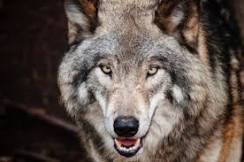
□Sea Otter

PREY
Keystone prey has a big role to play in the ecosystem. They serve as a critical food source for the predator population; moreover, they are resilient creatures, unlike some other type of prey species, which will be more susceptible to becoming extinct within an ecosystem.
EXAMPLE
□Antarctic Krill
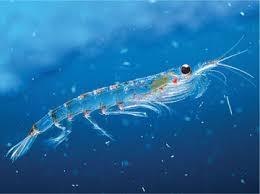
□Canadian Snowshoe Hare
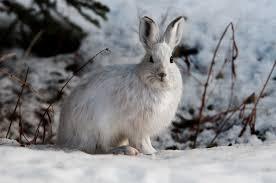
ECOSYSTEM ENGINEER
Instead of impacting the availability of the food supply, an ecosystem engineer will create, modify, or maintain the landscape around that source. It will, in addition, influence the prevalence and activities of other organisms that help define the overall biodiversity of the habitat.
EXAMPLE
□Beaver
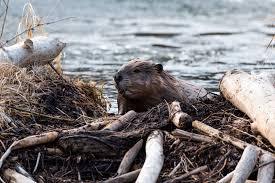
□African Savanna Elephant

MUTUALIST
Keystone mutualists are two or more species that engage in reciprocally vital interactions. The disruption of that will impact the pair or group and, ultimately, the ecosystem as a whole. This pair or group is often in a symbiotic relationship that will rely on each other for sustenance and reproduction.
EXAMPLE
□Ruby-throated Hummingbird
□Coral Honeysuckle
PLANTS
A keystone plant will provide a critical source of food and/or shelter for other species in its habitat.
EXAMPLE
□Saguaro Cactus
1 note
·
View note